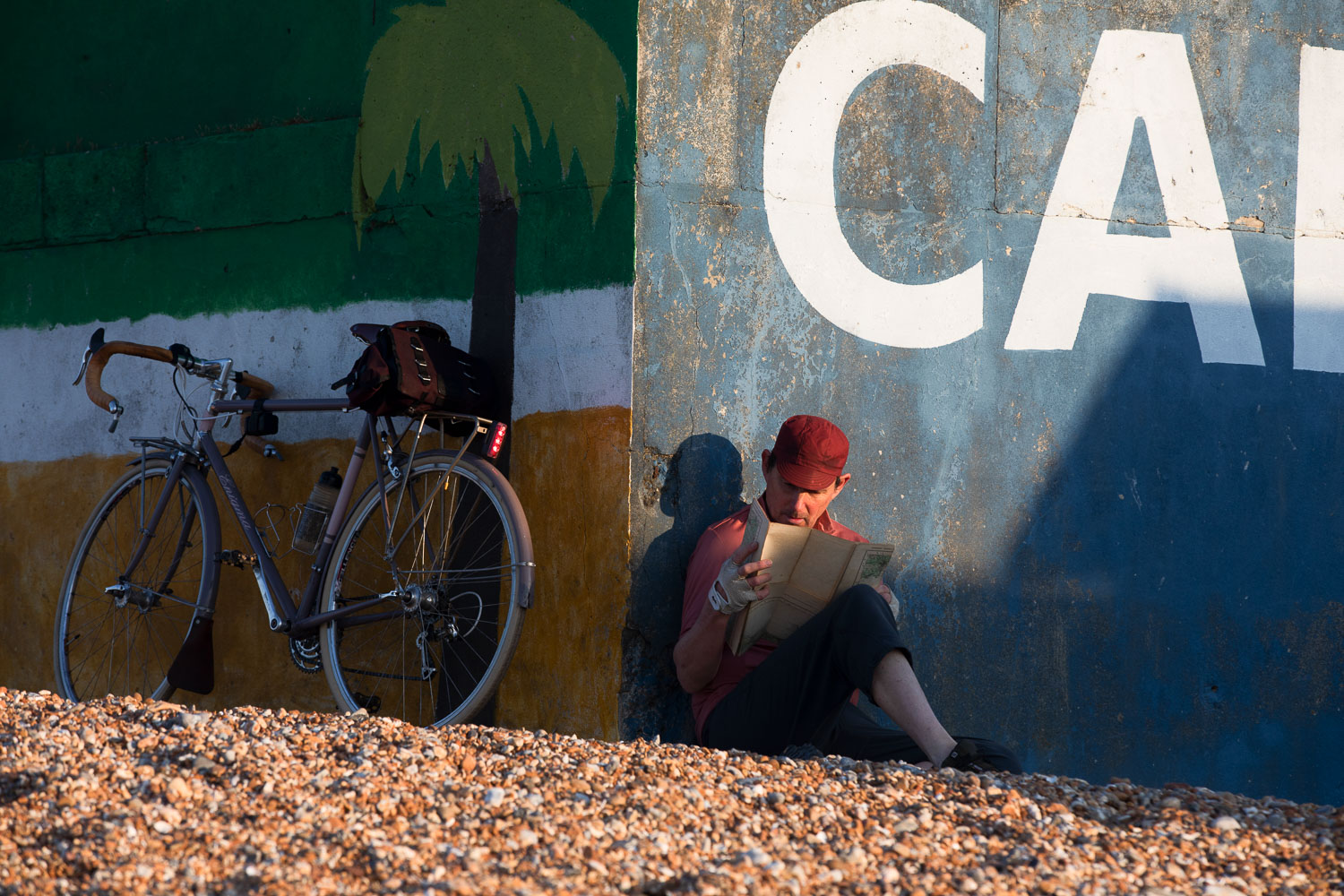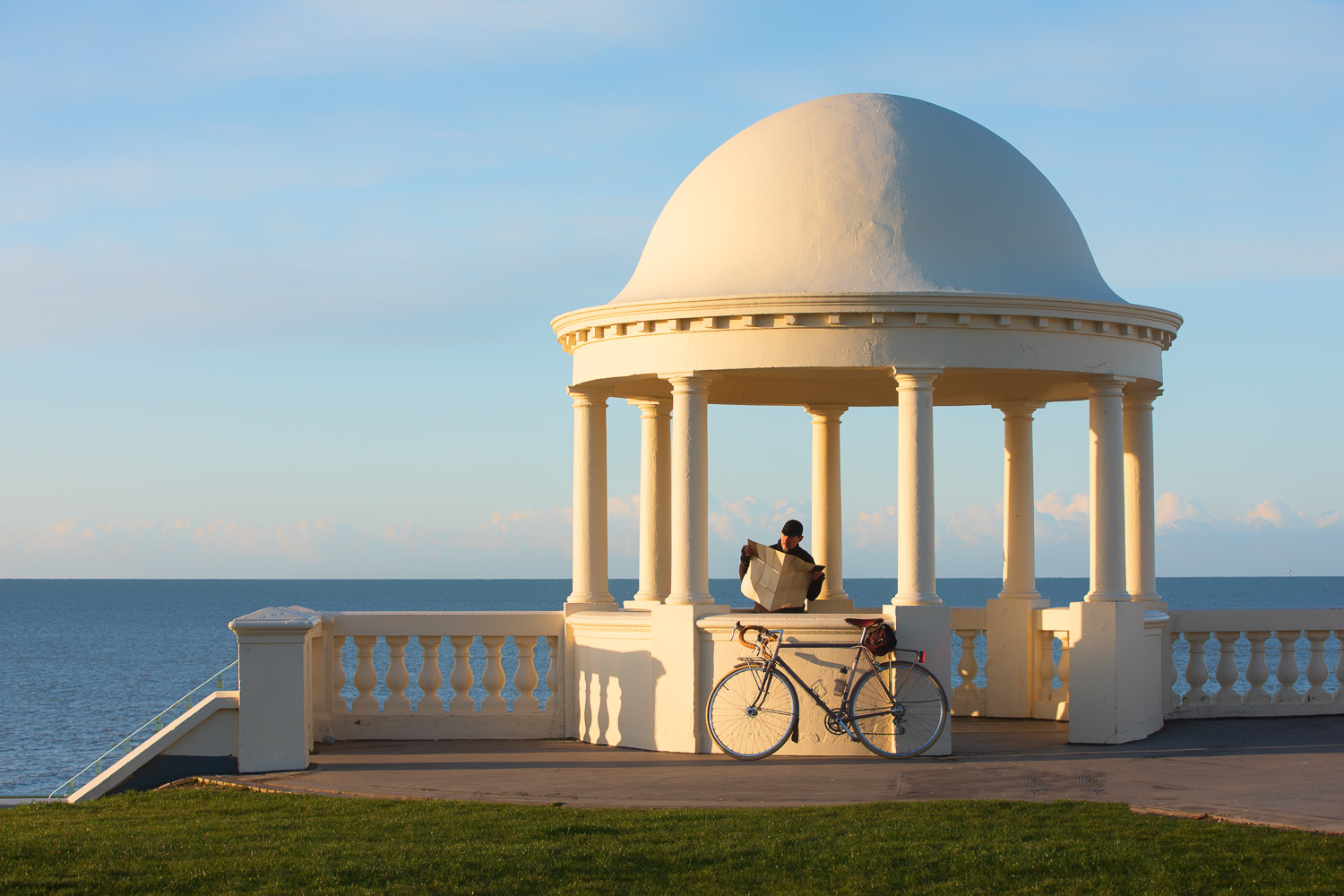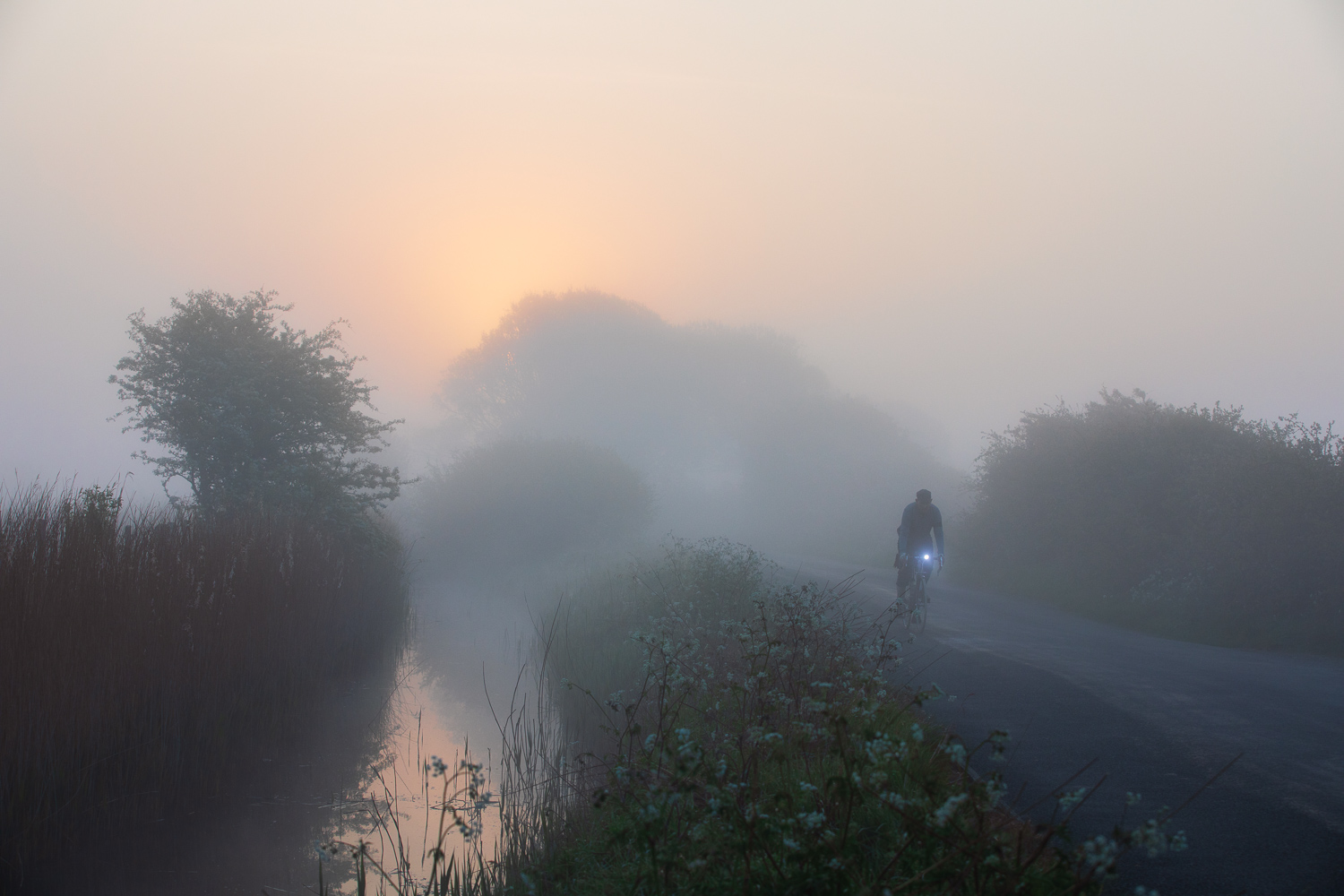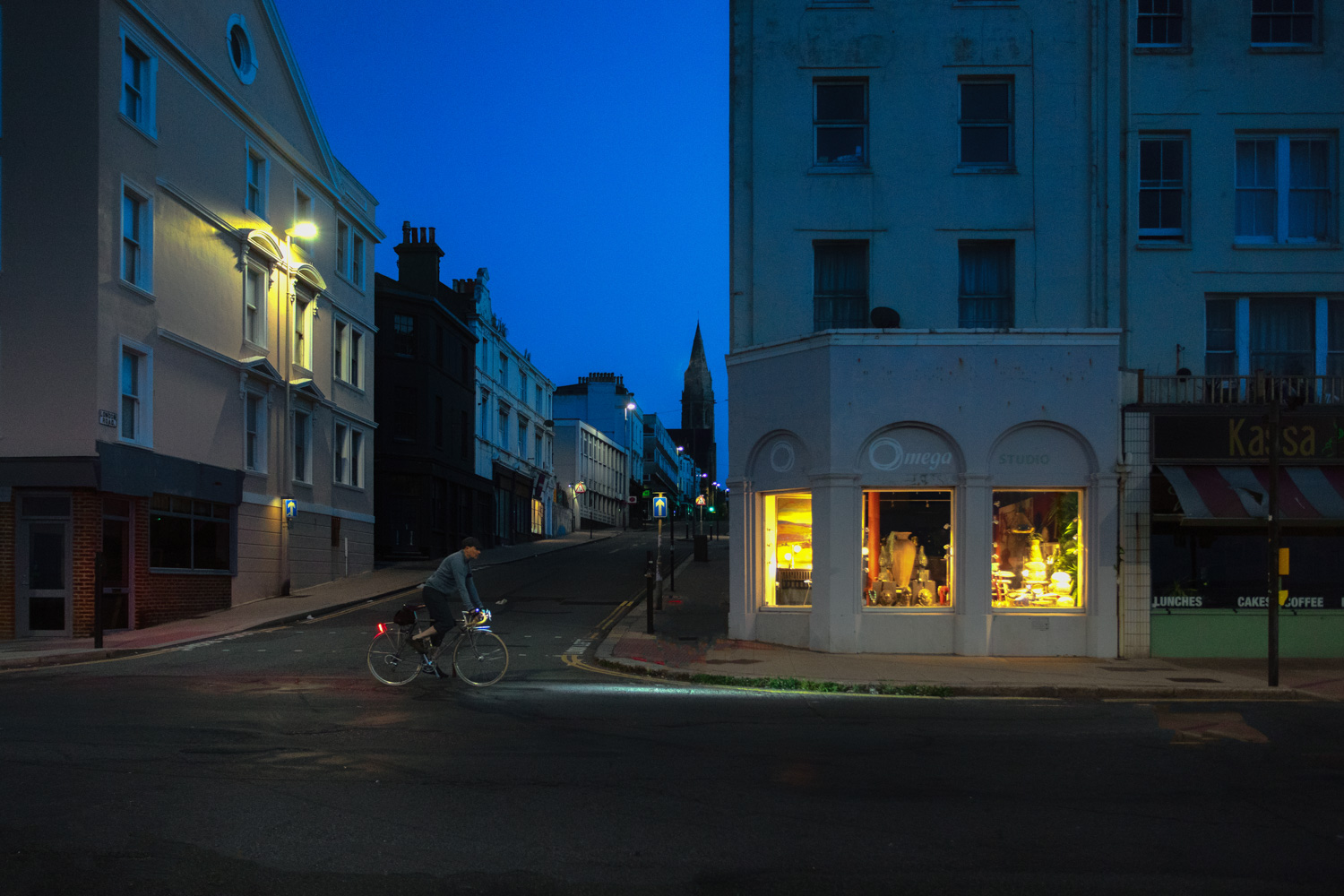Travels at Home
A Cyclist on the English LandscapeThe Backstory
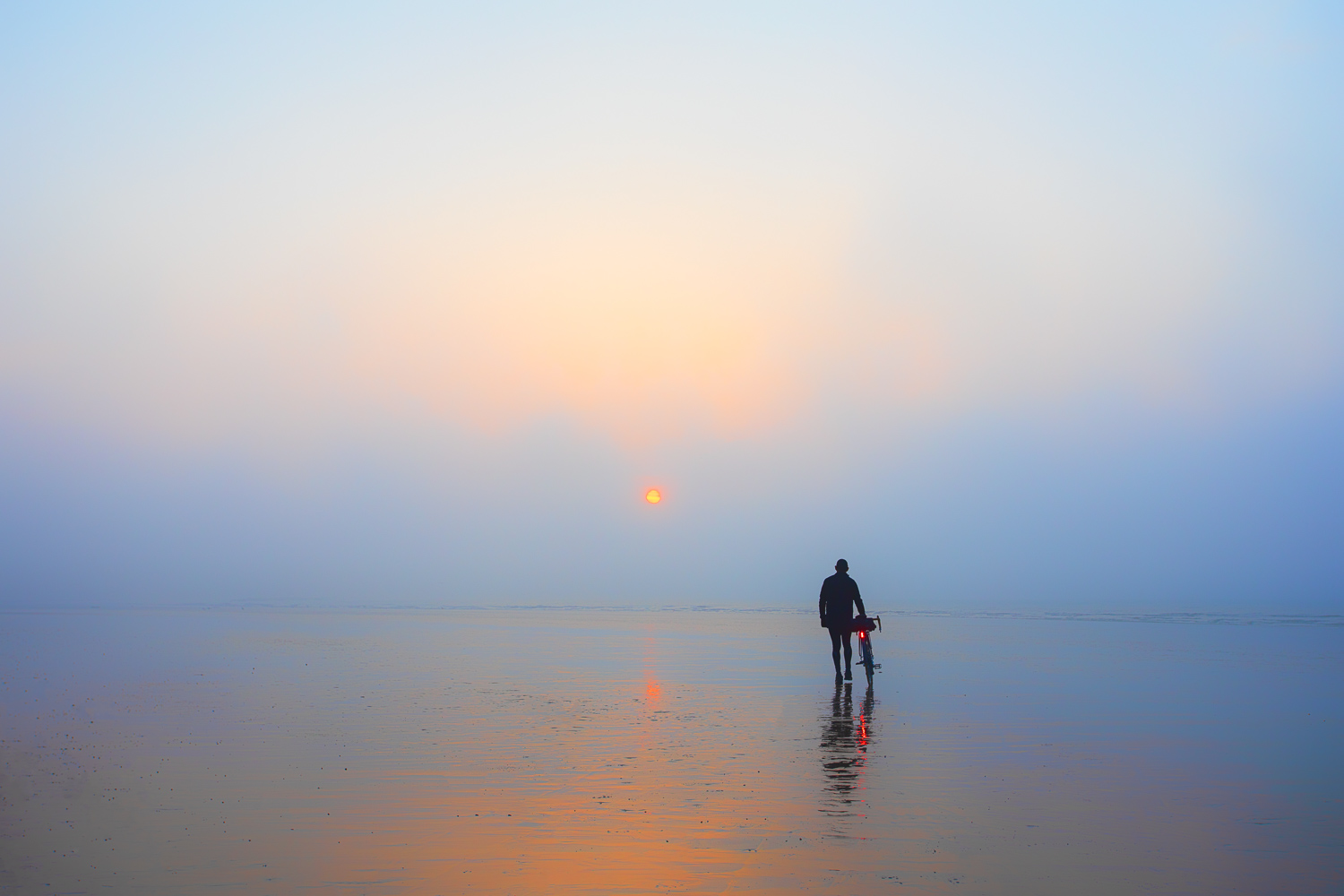
“Impression, Sunrise – Low Tide at Hastings”
A year ago, as a travel photographer grounded by the pandemic, I started bringing a camera and tripod with me on my morning bicycle rides and shooting them as though they were magazine assignments. What started out as just something to do, a challenge to try to see the familiar through fresh eyes, blossomed into a celebration of travelling at home.
I live in a faded old seaside town called St Leonard’s-on-Sea, in Sussex, on the south coast of England. If you’ve not heard of it, you’re in good company. It’s not on anybody’s list of celebrated English beauty spots. Indeed, must of my riding is across flat coastal marsh or down-at-heel seafront promenades.
There’s history here, of course. This is England after all. The lonely marshes I pedal across most days are where William the Conquer landed his men in 1066. Otherwise, except for being a haunt for smugglers, this stretch of coast dozed away the centuries until the Victorians brought the railways down from London.
Then, for a few gaudy decades, St Leonard’s and the other seaside towns along here became popular bucket-and-spade holiday spots, England’s own Costa del Sol – that is, until budget airfares and the real Costa del Sol, the one in Spain, lured the crowds away and plunged the area into a long and not-so-genteel decline.
As for me, I’m a transplant. I moved here from Australia. After the initial novelty wore off, that of being in England, it assumed a sort of shrugging familiarity – the usual shops, takeaways, a downbeat seafront, rough around the edges but with not-too-inconvenient access to Gatwick and Heathrow and flights to more interesting places.
A year of exploring St Leonard’s and its surrounds, camera in hand, chasing the light, has changed all that. It’s brought home the truth that you don’t need to board a plane and jet off to the far side of the world to experience a sense of travel or the romance of difference. It lies waiting on your doorstep – if you look. You don’t need to go far. Indeed, I haven’t been able to. With the various lockdowns that have been imposed on us over the past year, it’s been either discouraged or downright illegal to stray far from your residence. All these images were captured within a ten-mile radius of where I live, most of then much closer than that.
I plan my outings and set out each morning well before dawn in order to be where I want to be in time to catch the first light. In summer that can mean leaving the house as early as 3am. In winter, it’s cold starlight, the crunch of frost under my wheels, occasionally snowflakes swirling in the glow of my headlamp.
I carry everything I need on my bicycle and work entirely alone. I’m both the photographer and the cyclist in the photos. That part’s taken a bit of getting-used-to. I’ve never been comfortable in front of the camera. As a journalist, I’ve always said I had a great face for radio and the perfect voice for print. But needs must and the devil drives. What with social distancing requirements and zero budget, I’m all I’ve got. But then these images aren’t meant to be about me anyway, but to represent A Cyclist on the landscape, anybody, you perhaps.
Creating these images has required not only a new way of visualising but a whole new photographic skillset. The first question most people ask is how I trigger the shutter when I’m a hundred yards away on my bicycle. Simple. I use what’s called an intervalometer, a programmable timer that allows me to pre-set whatever delay I need and then have the camera fire off a chosen number of frames. That’s the easy bit. Anyone can take a selfie.
Placing yourself artistically in the scene is a far trickier proposition. It requires juggling a maddening number of details most of which you never think of until you start doing it and looking critically at the results. Everything matters, from the drape of light and shadow, to the set of your headlamps, to your body language on the bicycle. You have to be actor, director, location scout, gaffer, key grip, even wardrobe assistant: I always carry a spare jersey or two in different colours to make sure I can work with any backdrop.
You have to play all these parts in real time and rapidly shifting light and in an uncontrolled environment where cars, pedestrians, dog-walkers, horses, cyclists and joggers can – and do! – pop up out of nowhere. It can be hugely frustrating, and yet at the same time intensely satisfying when it all comes together. It’s addictive too. Over the past year I’ve become a keen student of local geography, not just the layout of the towns and the architecture and the contours of the landscape but when and where the light falls as the seasons progress. I know the tide tables like an old salt, follow the phases of the moon and I’ve developed a peasant’s eye for weather. I can tell at a glance, when I step outside my door, those mornings when an evocative mist will be rising miles away on the marsh. I plan my outings with the same jaunty expectancy I used to feel on my way to the airport. And when I push off down the street, the world becomes big again, the way it used to be when I was a kid: rich in detail, ripe for discovery.
By the time I return to the house, several hours later, having witnessed the sunrise and put however many miles of Sussex countryside beneath my wheels, I feel as though I’ve been places, seen things, travelled in the grand old sense of the word. And being a travel photographer, I bring back pictures of where I’ve been.
By way of further introduction, my name is Roff Smith. I am an award-winning magazine writer and photographer and a long-time contributor to National Geographic – for whom, over the past twenty five years I have contributed feature articles, photographs, authored books, lectured on cruise ships, and guided expeditions. Before beginning my long association with National Geographic I was a senior writer on the staff of Time Magazine. My work has also appeared in Newsweek, Nature, Smithsonian, Islands, Australian Geographic, Conde Nast Traveller, Lonely Planet Traveller, National Geographic Adventure, Atlas Obscura, and NPR. In addition to editorial work I have shot photographic assignments for companies such as Coca-Cola and Toyota. Over the years my assignments have taken me to every continent and over 100 countries.
Cycling has been something of a coda in my life for as long as I can remember, firing my imagination as a child to get out and explore the world and, later, as an adult, providing a means of release and escape. I have toured all over the world – most notably a 10,000-mile solo trek through the Australian outback, the story of which became a three-part series in National Geographic and later appeared in book form as Cold Beer & Crocodiles. I’ve explored Zanzibar by bike, ridden London to Istanbul, followed the Danube and pedalled the length and breadth of Britain. Once I even rode “round the world” (in less that ten seconds!) while at the South Pole on an assignment for National Geographic. These days I mainly explore the crooked lanes and byways of Sussex, where I live, near the old seaside holiday town of St Leonards-on-Sea.
As stated above all of these images are self-captures. For those interested in technical details, they were taken with a Canon 5D4 DSLR camera and a selection of Canon and Zeiss lenses. I fire the shutter remotely by means of an intervalometer – a programmable timer that allows to to set whatever delay I choose and then have the camera fire off a chosen number of frames. My bicycle is a classic old school tourer that was built for me by Mark Reilly who was not only a good friend but one of Britain’s most respected frame-builders. Assisting him at the time was Matthew Sowter, now an award-winning framebuilder himself and proprietor of Saffron Frameworks. So you could say my tourer has a pedigree of the best of British framebuilding.
Just to repeat because I receive so many queries about who the cyclist is and/or who took the photos this: all of these images were taken by me and I am also the cyclist in the frame. Creating these images singlehandedly requires a great deal of patience, perseverance, planning and an almost neurotic obsession with detail. I work entirely alone, in the early hours of the morning, sometimes leaving the house as early as 3:30am in order in order to ride to where I want to be to catch the best of the dawn light. Although I am by necessity my own model, I try to anonymise myself as much as possible. As an artist, I want these images to represent A Cyclist on the landscape – you perhaps – rather than yours truly. A final note: all of these images were taken within a ten-mile radius of where I live. These really are travels at home.
